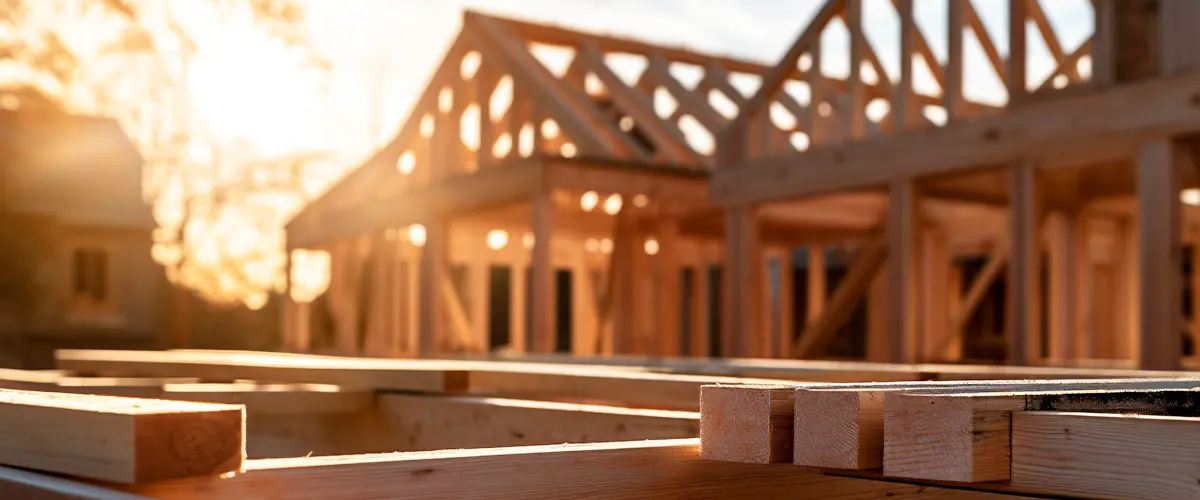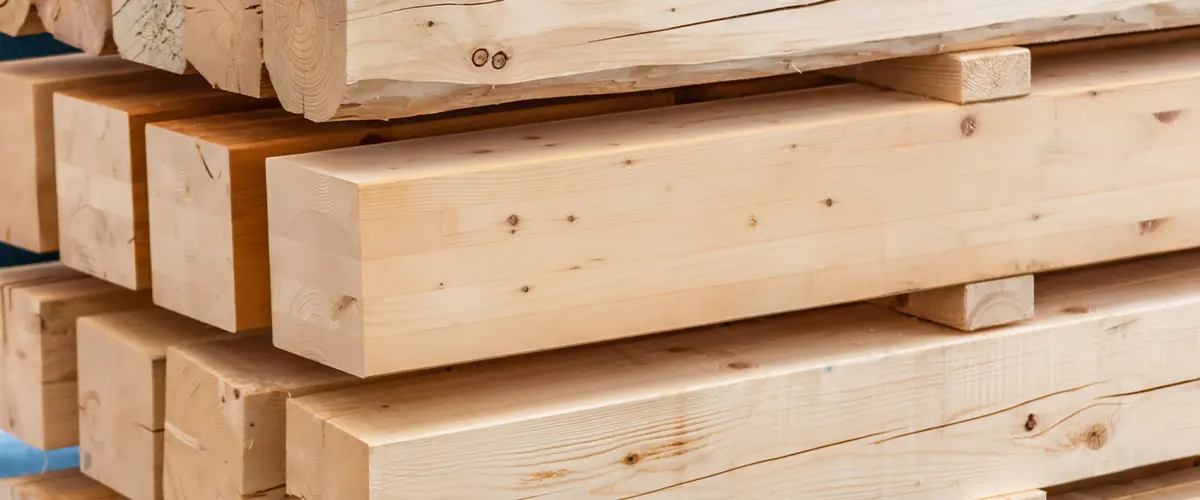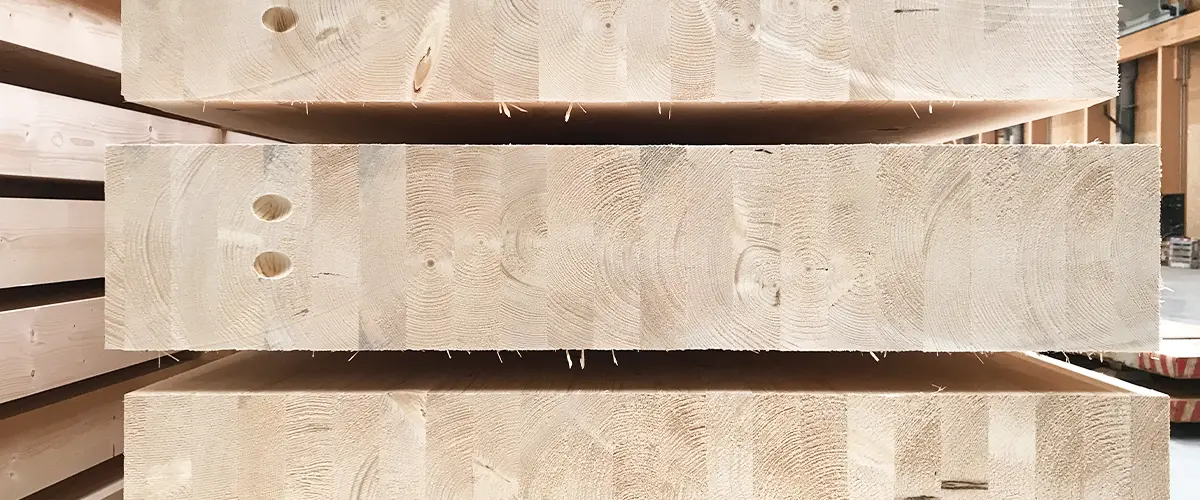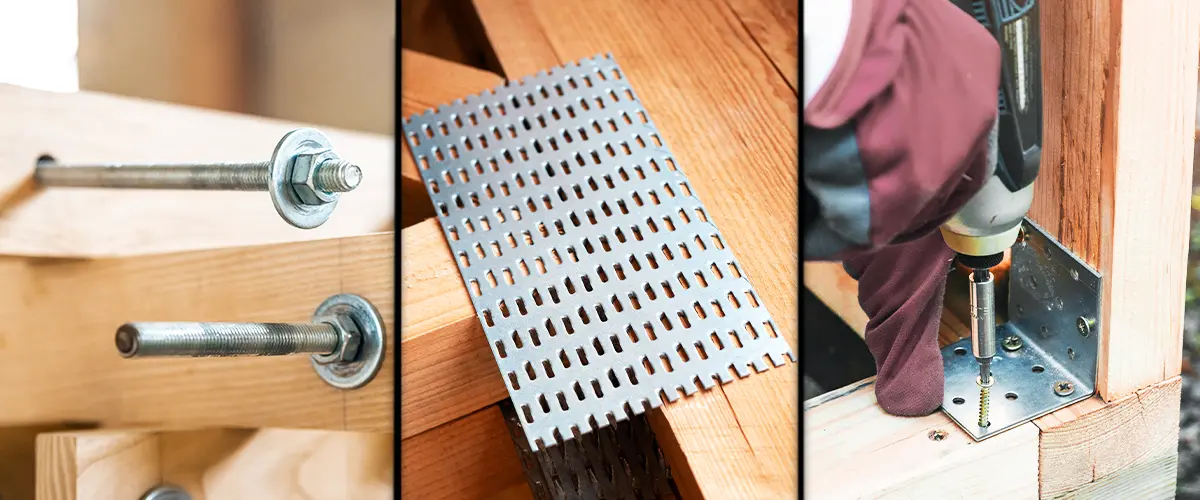Selecting the ideal wood beams for your construction endeavor is pivotal, as they form the backbone of any structure, offering essential support and stability. Our comprehensive guide is designed to navigate you through the myriad of wood beam options and their respective joint techniques.
Discover your perfect beam solution below!

Types of Wood Beams in Construction
Whether opting for the traditional charm of solid wood or the innovative resilience of engineered options, understanding the different types of wood beams available is crucial for any homeowner looking to embark on a building project.
Solid wood beams
Solid wood beams are a classic choice for construction, offering both strength and natural beauty. Homeowners often prefer them for their traditional appeal and the sturdy support they provide in structures.
Crafted from single pieces of timber, these beams come in various species like Douglas fir, known for its durability and excellent load-bearing capabilities.
Using solid timber beams means embracing wood’s natural variations, including knots and grain patterns that add character to your home. They do not contain any glue or other engineered components, making them a completely natural option.
With proper installation and maintenance, solid wood can endure for generations, holding up roofs and floors with unwavering reliability.

Engineered wood beams
Engineered wood beams are a modern solution for homeowners seeking strength and durability without the heft of solid wood. These beams, often made from laminated veneer lumber, consist of multiple layers of thin wood bonded together with strong adhesives.
They provide remarkable stability and are less likely to warp or bow over time compared to traditional solid beams.
Laminated veneer lumber is customizable for different applications, making engineered wood beams versatile options for various construction projects. Their uniform quality allows for easier installation and can often support heavier loads than their solid counterparts.
This makes them an excellent choice for long spans in home design where open spaces are desired.

Explore the Best Wood Beam Solutions with Conklin Construction
Ready to enhance your home with the perfect wood beams? Let Conklin Construction guide you through the selection process. Contact us today and take the first step towards a structurally sound and aesthetically pleasing home with beams that last generations. (608) 839-0620
Joint Methods for Wood Beams
- Bolts and nuts
These common mechanical fasteners easily connect two or more wood beams. Drill holes through the beams and secure them tightly with bolts and nuts.
- Metal plates
Galvanized or stainless steel plates can reinforce joints between beams. Carpenters affix these plates to wood surfaces with nails or screws for added strength.
- Joist hangers
Designed to support where one beam meets another at right angles, joist hangers ensure a snug and secure fit without compromising the integrity of the wood.
- Brackets and straps
orcements wrap around wood joints, offering additional stability where beams intersect or when creating frames.
- Anchor tie
Use these when securing wood beams to concrete foundations or masonry. Anchor ties help prevent any movement between different materials in a structure.

Make The Right Choice For Your Home
In summary, homeowners have various options when selecting wood beams for construction projects. Understanding the differences between solid and engineered beams helps in making informed choices.
Each joint method offers unique benefits for stability and aesthetic appeal. Carefully consider these factors to ensure the structural integrity and beauty of your home’s design. Remember, the right beam type and joint method can make all the difference in your build!
FAQs about Wood Beams
In construction, you’ll find solid lumber beams, laminated veneer lumber beams, and sometimes engineered wood products designed specifically for supporting structures.
Builders choose laminated veneer lumber beams because they’re strong and reliable for building support, plus they can be made in different sizes to fit a variety of projects.
Yes! Wood beam joint methods allow builders to securely connect two or more pieces of wood together to extend their length or change their shape for construction needs.
It depends on your project’s requirements; while solid wood is traditional and natural, laminated veneer lumber often provides greater strength and stability for heavier loads and longer spans.
Build with Confidence with Conklin Construction
Choosing the right wood beams for your construction project can be daunting, but it doesn’t have to be. Conklin Construction is here to simplify the process.
Our team of experts will work with you to understand your project’s specific needs, helping you select the best type of wood beam and joint method for your home.
Whether you’re looking for the charm of solid wood or the resilience of engineered beams, we’ve got you covered.
Reach out to Conklin Construction today and build your dream home with confidence. (608) 839-0620
